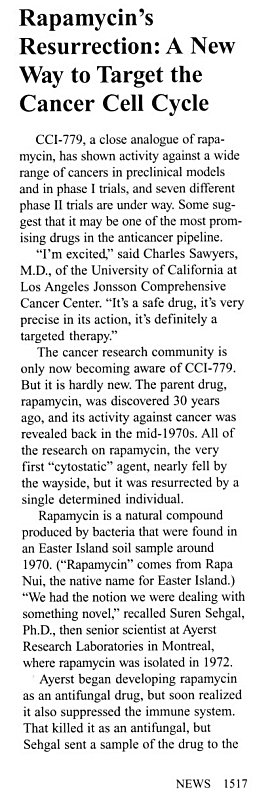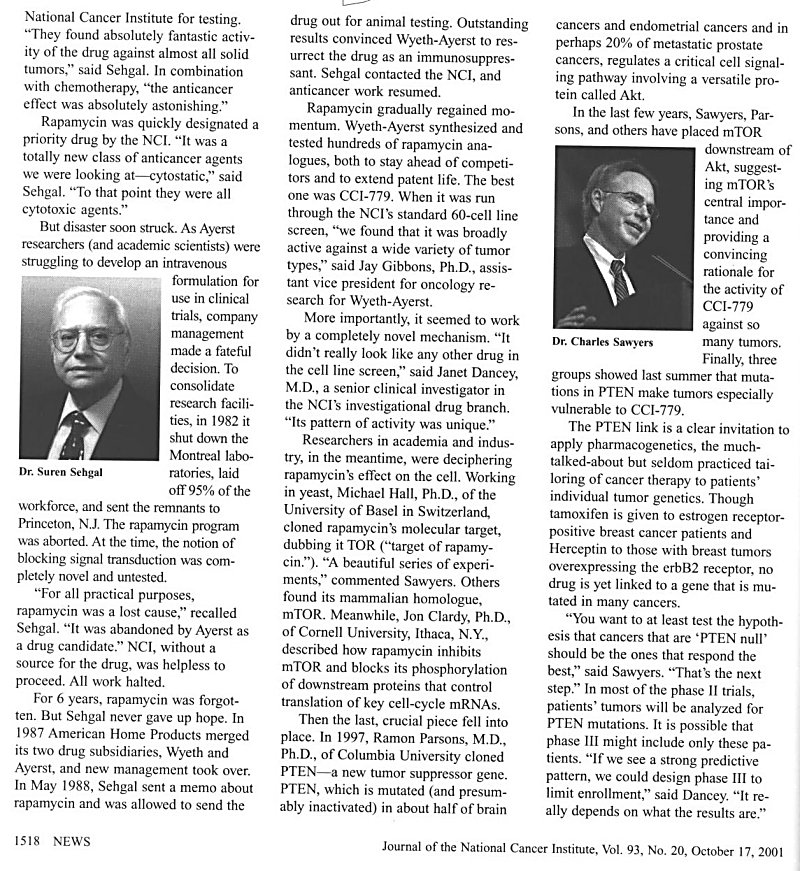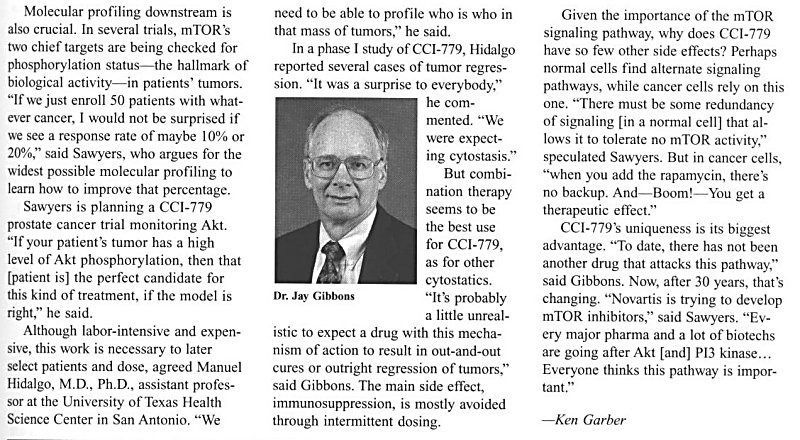
Rapamune® (sirolimus), is the first in a new class of immunosuppressant agents developed for the prevention of organ rejection following renal transplantation.
In 1964, a Canadian scientific expedition traveled to Easter Island (or Rapa Nui, as it is known by locals) to gather plant and soil samples. The expedition shared their soil samples with scientists at Ayerst's research laboratories in Montreal (now Wyeth Laboratories Research Inc.) where in 1972 Dr. Suren Sehgal, identified and isolated a new chemical compound that contained potent anti-fungal properties. Dr. Sehgal and his team quickly discovered that the compound also suppressed the immune system. Dr. Sehgal sent a sample of the drug to the National Cancer Institute for testing where it was discovered that the drug had "fantastic activity" against solid tumors. Unfortunately, due to corporate priorities, management did not want to pursue drugs based on the compound. They shut down the facilities in Montreal, laying off 95% of the staff and moved a small contingent to Princeton NJ. Dr. Sehgal persisted in his efforts to develop drugs based on the compound, resurrecting the research in 1987 with the backing of new management after the merger of Wyeth and Ayerst. Rapamune was developed as an immunosuppressant by Dr. Sehgal and his staff and is now worth billions of dollars to the company. The drug is also used under license by Johnson and Johnson to coat stents used in heart patients to prevent subsequent arterial blockage. Rapamune is also used to prevent rejection of transplanted pancreatic islets - a possible cure for diabetes. Investigation continues into its usefulness in treating tumors.
The compound was named rapamycin (Rapamune) after Easter Island's native name. Rapamune is recommended for use in combination with cyclosporine and corticosteroids for the prevention of acute organ rejection in kidney transplant patients. Results from clinical trials demonstrate that Rapamune, when used in this combination, reduces acute rejection rates by up to 60 percent compared to control regimens. The control regimens contained cyclosporine and corticosteroids in combination with either azathioprine or placebo. Graft loss and patient survival rates at six and 12 months were similar in the Rapamune- and comparator-treated patients. Studies also show that patients treated with Rapamune experienced a reduction in the incidence of all grades of acute rejection episodes.
"Kidney transplantation today is a relatively common and successful procedure; patients can often expect to live with their new kidney for one to two decades,” notes Dr. Allan MacDonald, Director of Transplantation, QEII Health Sciences Centre, Halifax, Nova Scotia. "But an important consideration is that the drugs they need to take in order to prevent rejection can produce side effects that are difficult to tolerate, physically and emotionally. Offering patients Rapamune, a drug with a reduced side effect profile, can significantly improve their long-term quality of life.”


